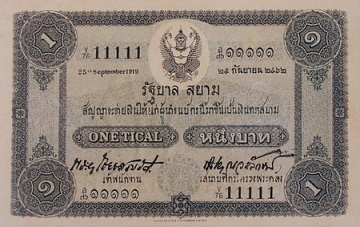
1 Baht (1918)
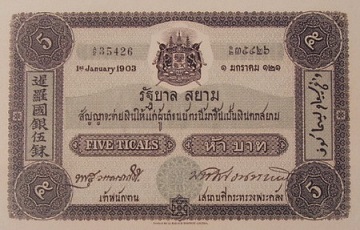
5 Baht (4 types isued in 1902 - 1911)
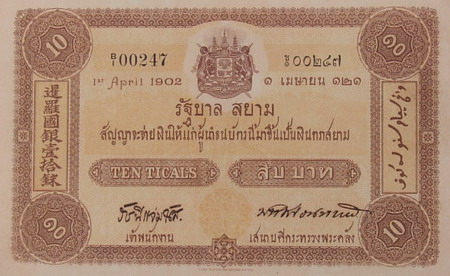
10 Baht (4 types isued in 1902 - 1910)
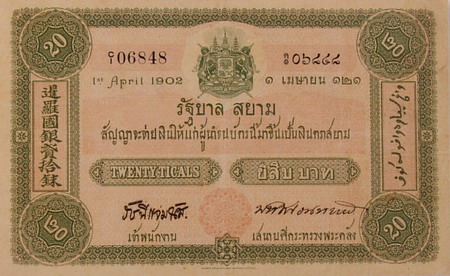
20 Baht (4 types isued in 1902 - 1910)
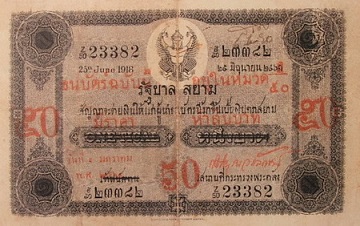
50 Baht (2 types isued in 1918)
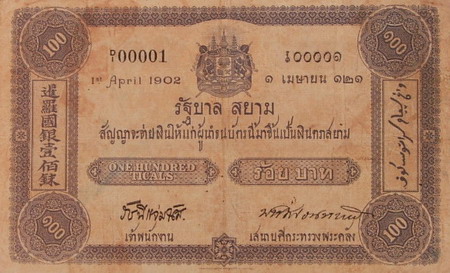
100 Baht (5 types isued in 1903 - 1917)
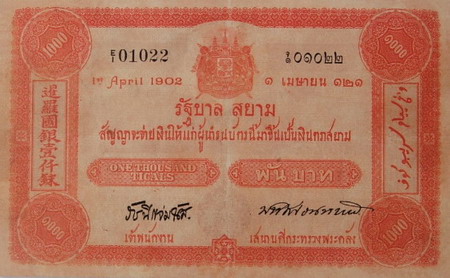
1000 Baht (3 types isued in 1902 - 1912)
Appraisal price ; click on each denomination

Banknote Info
In 1900, Mr. Charles James Rivett Carnac, the Royal Treasury Ministry advisor, suggested the government about the banknote issuance by keeping the India's currency role which follow the British currency standard.
Thai government proceeded to contact Mr. W.J.F. Williamson, British officer of Indian Ministry of Finance, to study and set the currency regulations
The Banknote Department was established and the Currency Acts was also promulgated in 1902. Mr.W.J.F. Williamson recommended that the new banknotes should be printed instead of using the remained Ngeon Kradad Luang (treasury notes) in stocks because their multi-color design were difficult to identify one among other denominations.
Williamson wrote to the Bank of England requesting that Thai banknotes be printed there, the Bank of England declinned the request because it would printed to only India which was under British rule. Anyway the Bank of England suggested Messrs Thomas de la Rue & Company Limited, British firm to have responsibilities in banknote printing for Thailand.
The first series Thai banknotes that produced by Thomas de la Rue were printed only one side with flat ink as called uniface banknote. The format design was quite identical to each denomination , but there were adjustment in paper size and color.
The main appearance of this series were like boxing stage plan, the denomination value were on the four corners in Thai and Arabic. There were Chinese words on the left and Malay on the right. The Royal Coat of Arms were in the middle top above Thai words "The Siam government promise to pay the money to the holder in Siamese currency". The image of three-headed elephant watermark located at the middle which surrounded by the watermarks of the Government of Siam and the denomination indicated in both Thai and Roman.
The first series banknote were introduced on September 7th, 1902 with five denominations; 5 Baht, 10 Baht, 20 Baht, 100 Baht and 1000 Baht. Later, the WWI in Europe caused the delay in banknote transportation and affected to the shortage of banknotes. Therefore the Royal Treasury overprinted 50 Baht on the uncirculated 1 Baht denomination then issued them in 1918.
